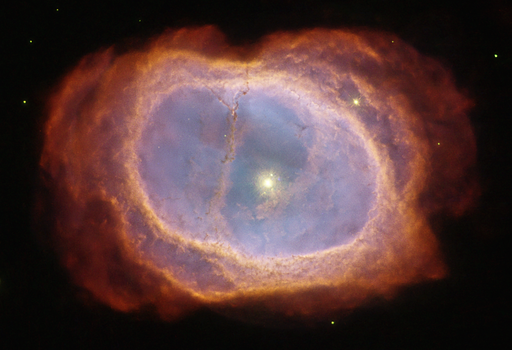In the vastness of space, giant clouds of interstellar gas play an important role in the life cycle of stars. These regions, known as nebulae, come in a wide variety of shapes, such as ring, helical, stellar, disk, bipolar, quadrupolar, and more. A recent discovery on nebula shape amazed scientists with the hidden structure unveiled through the James Webb Space Telescope.

(Photo: Wikimedia Commons/ geckzilla)
Eight-Burst Nebula
About 2,000 light years away, a planetary nebula known as the Southern Ring Nebula lies in the Vela, the Sails constellation. Officially designated as NGC 3132, it is also called Eight-Bursula since it looks like a figure 8 when seen through telescopes.
Although NGC 31sidered a planetary nebula, its nebulae are the cocoon planets. Instead, they are the cocoon of dying, sun-like stars that transform inside the chrysalis until they blossom into a white dwarf. In other words, nebulae are formed out of the outer envelope of a dying star.
READ ALSO: NASA James Webb Space Telescope's Colored Southern Ring Planetary Nebula Photo Seems 'Fake' [LOOK]
Unexpected Discovery
The swelling nebula is home to a dying star that holds a secret. Astronomers also discovered that the Southern Ring Nebula exhibits three stars, indicating that three stars are located at its center.
In December 2022, the James Webb Space Telescope photographed exoskeleton formation, which revealed the formation from molecular hydrogen gas. As the warm gas is illuminated and heated by ultraviolet gas coming from the white dwarf, it radiates with a temperature of about 1,340 degrees Fahrenheit (726 degrees Celsius). However, this exoskeleton represents only a small fraction of the molecular gas in the nebula.
Led by Joel Kastner of the Rochester Institute of Technology, a team of scientists searched for more of the nebula's molecular gas. They looked for carbon monoxide gas using the Submillimeter Array (SMA), a group of eight radio telescopes mounted on an inactive volcano in Hawaii called Mauna Kea.
By mixing carbon monoxide with hydrogen and other molecular gases inside the nebula, astronomers can observe the carbon monoxide content, which is a substitute for observing the other molecules that are not easy to detect. Indeed, the SMA successfully measured both the distribution and velocities of the carbon monoxide molecules, revealing the parts that are moving towards and those that travel away from us.
As its name suggests, the Southern Ring Nebula is primarily shaped as a ring. However, SMA observed that this ring expands, which is expected as the nebula grows slowly before dispersing. When the data enabled Kastner's team to make a 3D map of the nebula's molecular exoskeleton, their astronomers confirmed only were astronomers confirmed that the ring is just handled in a bipolar nebula seen end-on. Still, a second ring was also found perpendicular to the first.
The entire arrangement also shows a tail of possibly three stars at the heart of the Ring Nebula. If all of them really exist, they are likely either very close to one another or too faint to be resolved separately. The stellar trio also tends to reach the end of its life.
RELATED ARTICLE: Rare Nebula Surrounding 2 Massive Stars Answers Long-Standing Mystery in Astronomy
Check out more news and information on Nebula in Science Times.


![Some Brain-Injured Patients Who Died After Life Support Was Withdrawn May Have Survived, Recovered Some Level of Independence 6 Months After Injury [Study]](https://1721181113.rsc.cdn77.org/data/thumbs/full/53613/89/56/50/40/some-brain-injured-patients-who-died-after-life-support-was-withdrawn-may-have-survived-recovered-some-level-of-independence-6-months-after-injury-study.jpg)











